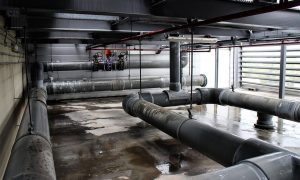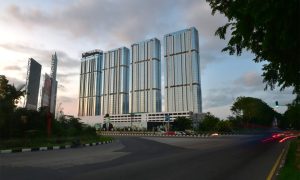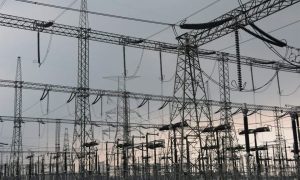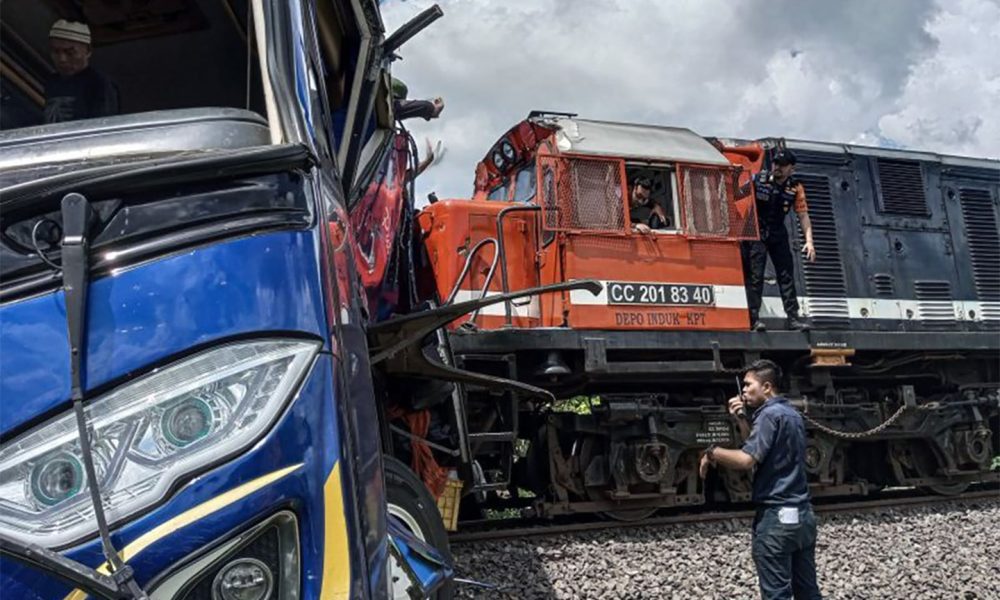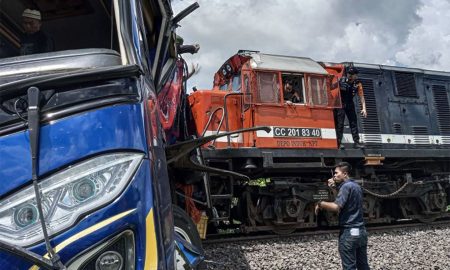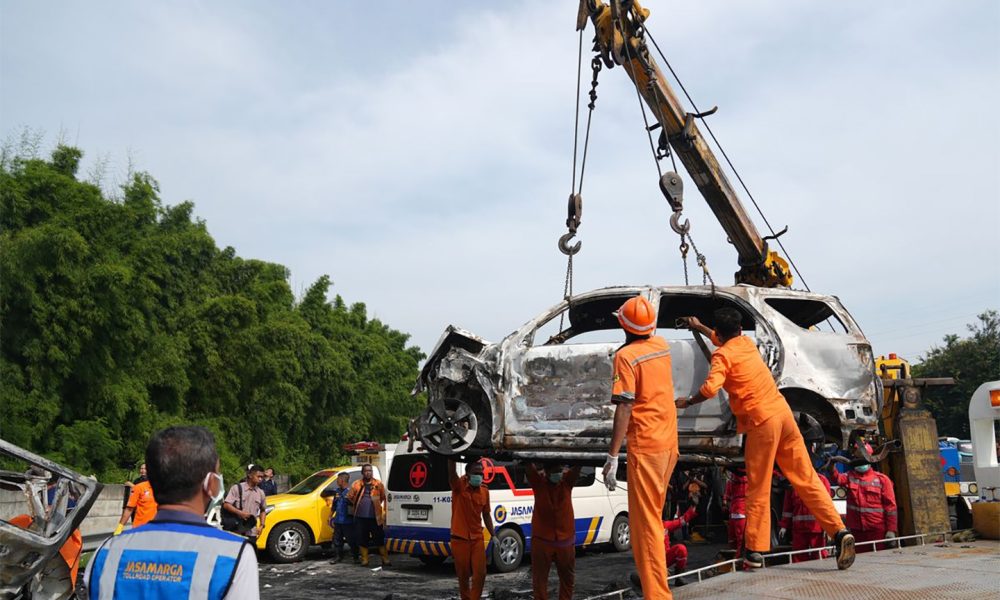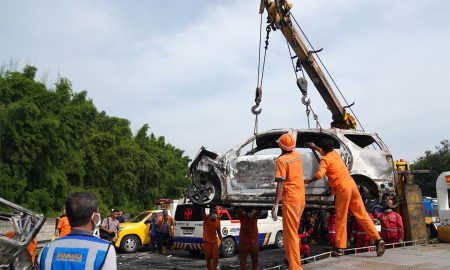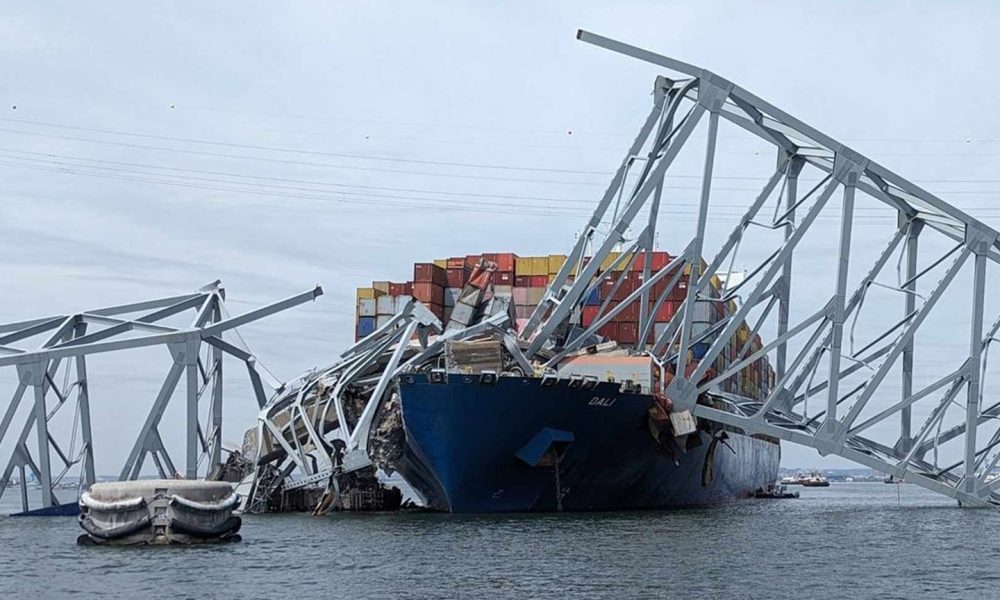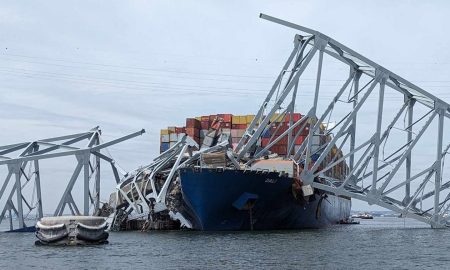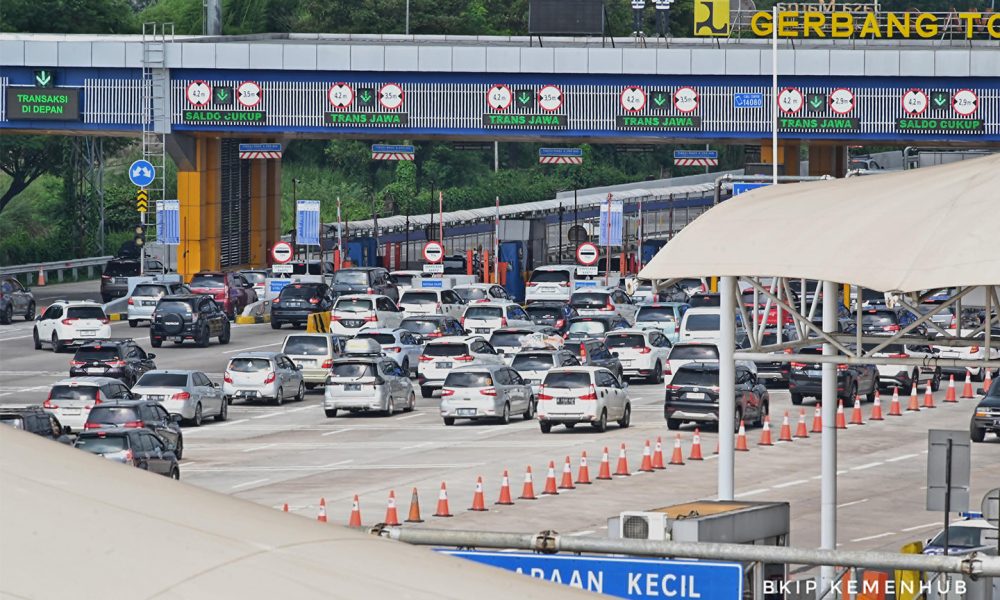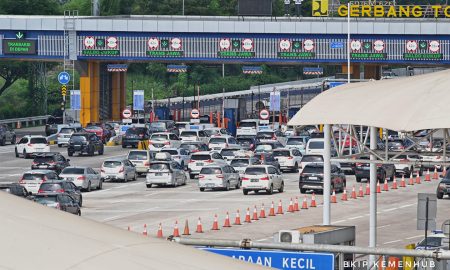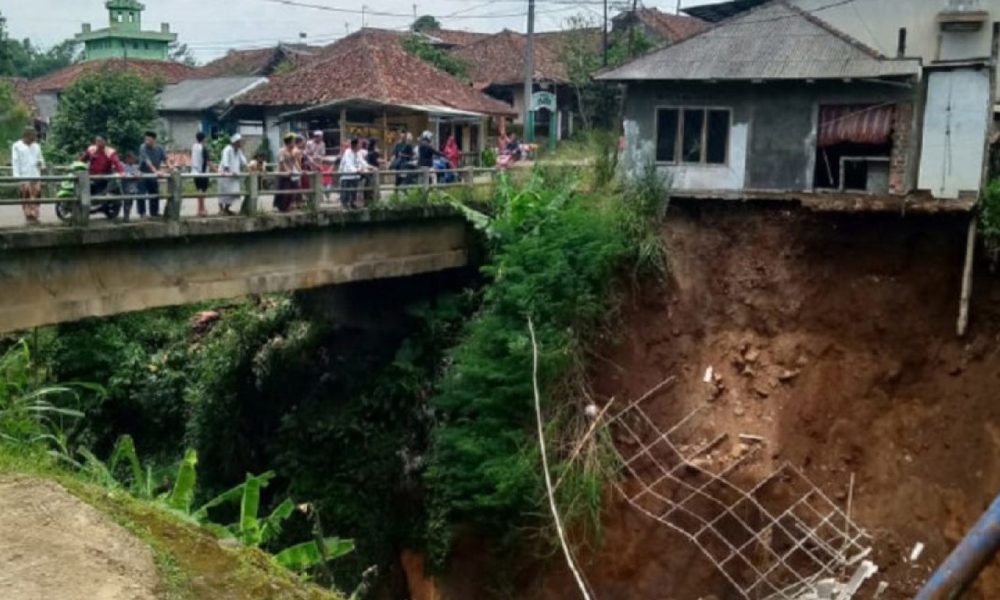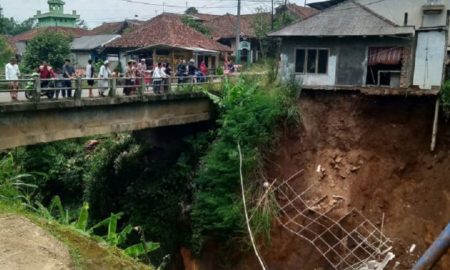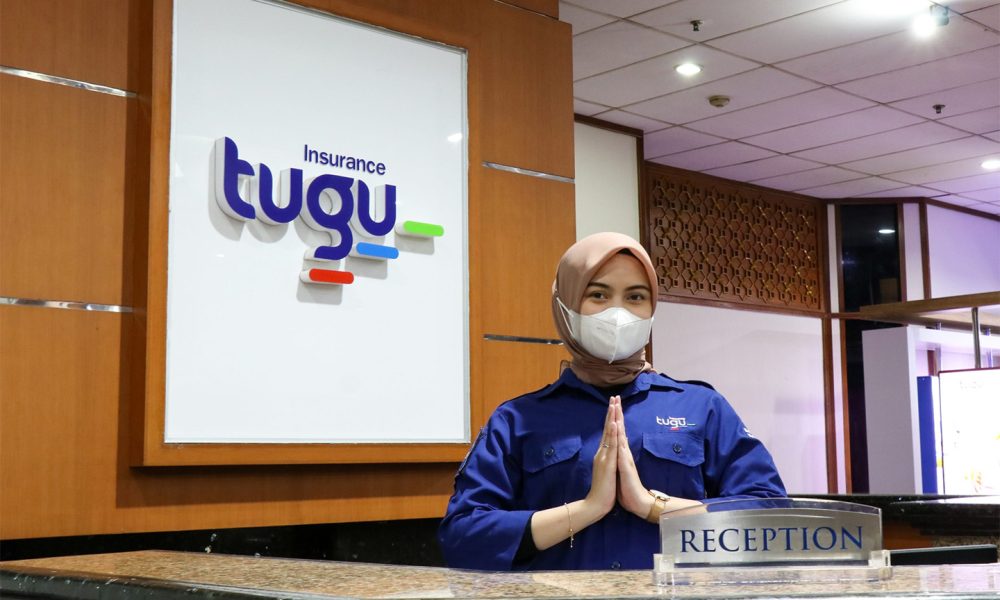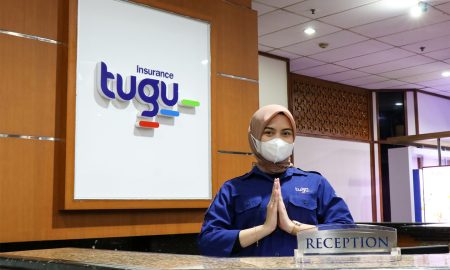Liga Asuransi – Dear readers, how are you? Discussion about risk management and insurance for construction work is like an endless story. There are many risk factors that need to be considered so that the project runs smoothly.
One of them is the mobilization of all components needed by the project such as project materials, construction equipment, components, and workers.
As you may be aware that almost 75% of the project needs must be transported to the project site. And usually, the location of the project is a distant place and difficult to reach because there is no access road to the project location.
The farther the distance, the more difficult the location, and the larger the equipment transported, the higher the risk.
There are many risks that can occur during mobilization. Falling during loading to conveyances (ships, trucks, and trains), falling while on the way, burning, robbed, rioting, falling at the time of unloading on the project, and other risks. The losses incurred can be huge.
Therefore, it is necessary to carefully prepare for carrying out mobilization work. One way is to use the services of an experienced project logistic company.
As insurance brokers and consultants, we pay special attention to this. Because if it is not managed properly the risk becomes too high, and the insurance company may not be interested or even not willing to provide insurance coverage at all.
To find out more about risk management and insurance for project mobilization work, here we will write an article summarized from several sources. The links are at the bottom of this article.
If you are interested in this article, please share it with your colleagues, so that they also understand like you.
As we all know that mobilization is the series of actions required to bring a contractors’ people, equipment, and materials to the worksite, and it requires a high-value contractor management activity.
Proper ‘mob-up’ is critical for both contractors and clients as it generally determines how quickly and how the Project logistics company can meet project objectives for safety, quality, and productivity.
Committing these critical steps to a measurable standard is also a project management best practice.
Many construction companies and building material manufacturers are not content with how equipment and materials are shipped to their warehouses, job sites, or laydown yards. Several factors have made the efficient movement of project materials more challenging than ever.
Finally, the logistical complexity of many projects can complicate communication among contractors, suppliers, and trucking companies. As a result, deliveries arrive late, deadlines are missed, and the profitability of a project is compromised.
Construction companies can tackle these challenges by having a carefully scripted construction logistics plan. In fact, a centralized, coordinated approach to transportation can contribute to the profitability of a construction project. Doing it right, a project logistics company requires a solid understanding of freight logistics and the unique, complex requirements of each construction project.
Here are project logistics company key elements of a construction logistics plan that can contribute to the success of project logistics company Jobsite.
Scheduling
A successful construction project relies on the timely delivery of materials and products to the worksite. Selecting the right carriers and communicating deadlines are only part of this process.
To ensure reliable transportation throughout a project, construction companies and manufacturers must understand logistics, oversee pre-planning, and remain in constant contact with carriers. Because contractors and manufacturers ultimately take the blame if orders are wrong or work is delayed, they need to have an active role in managing the movement of freight.
Risk Management
With more vehicles on roadways than ever before, safety is a top concern for trucking fleets, shippers, and industry regulators. A carrier that causes an accident on a Jobsite, or while hauling a product en route to a Jobsite, can lead to major legal ramifications for the shipper if that carrier is deemed unsafe.
Mobilization approach
A qualified project logistic company has extensive knowledge in mobilizing projects locally and globally, sometimes within very challenging timescales.
The project logistics company understands the complexities in coordinating multiple stakeholders (we; contractors; healthcare clients) and the critical risks that need to be considered so the Project logistics company can achieve a successful mobilization.
The focus throughout will therefore be on comprehensive planning, management of risk, monitoring of progress, and effective Project logistics company.
In this way, the Project logistics company will provide the with the most efficient, cost-effective establishment of services with the project logistics company’s first risk factor.
Mobilization plan
Project logistics companies create a robust plan to manage and monitor all activities during the mobilization phase. It begins with gaining a clear understanding of client expectations. Project logistics company ensures all parties involved
Project logistics company understand their respective responsibilities, the processes to be used, and the timeframes involved.
Risk mitigation is of utmost importance. In this respect, the Project logistics company produces management information reports to help identify and monitor and resolve early risks and issues.
Due diligence and operational readiness
Every activity the Project logistics company undertake is subject to the Project logistics company a robust due diligence process.
Project logistics companies have the checks and balances to make sure that no issues arise pre- or post-handover. Through the Project logistics company Operational Readiness Review (ORW), the Project logistics company creates checklists from mobilization through to service delivery.
Developing policies and procedures
During mobilization, the Project logistics company develops live operational practices, policies, and procedures. These will include the Project logistics company’s general approach to the delivery of hard and soft services at the hospital, but also how the Project logistics company will maintain specific systems.
A project logistics company can handle global and regional reach to access standard operating procedures from other contracts which the Project logistics company can tailor to the local context. The project logistics company will apply best practices and incorporate lessons learned to ensure the best regime for
Mobilization activities
The project logistics company will mobilize a team of high-caliber multi-skilled technicians to support and witness building commissioning. This will also help Project logistics company technicians gain a thorough understanding of the building management system and both clinical and non-clinical systems Second is service commissioning, which the Project logistics company will conduct in stages as mapped out below.
By mobilizing a select team of staff, to conduct trials, ‘what-if’ scenarios, and mystery shopping exercises ahead of the Hospital’s full opening, the Project logistics company will eliminate the potential challenges to delivering a seamless and uninterrupted service:
Mobilization
Project logistics company mobilization process steps are as follows:
- Assemble mobilisation team
- Establish an internal transition governance board
- Determine the stakeholder map and communication plan. Discuss:
- Key dates for occupying or bringing the facility into use
- Key tasks in the occupation process and clear lines of responsibility
- Key dates for selecting and ordering equipment
- Develop contract plan
- Establish the senior management team
- Maintain a risk and issues register
- Engage with the Ministry of Lab Project logistics company on block visas
- Recruit and onboard project workforce
- Procure equipment, tools, and consumables
- Finalise and sign off approved subcontractors
- Pre-soft opening
- Sites induct the workforce
- Carry out service acceptance testing
- Witness the commissioning and service handover
- Develop standard operating procedures and service plans
- Carry out site familiarisation
- Integrate with ’s management and clinical services
Soft Opening (when the building is handed over but before operations go live)
At this point, hard and soft operatives will undergo extensive training programs in the specific service requirements of the project, so the Project logistics company is up and running from day one. Training elements will be compliant with Health Technical Memorandum (HTM) requirements, and
- include:
- Handling of gases
- MGPS (medical gas pipeline systems)
- HVLV (high voltage/low voltage electrical systems)
- Working at heights
- Pressure systems
- Confined spaces
- Specialist ventilation systems
- Site-specific familiarisation of systems
Purpose-built technology to mitigate risk
Project logistics companies recognize the critical risks to consider. To mitigate them, the Project logistics company has developed the Project logistics company’s own risk management software tool. This helps us in the Project logistics company’s own internal governance, identifies risk then
mitigates it – both in mobilization and across all other components of Project logistics company service delivery. records risks and opportunities. It assesses events in terms of probability, impact, and trend. It also produces several pre-formatted reports.
By recognizing the critical risks to mobilization – the Project logistics company can then pay every detail to plan, risk management, progress monitoring, and project logistics company. Through this approach, the Project logistics company will intelligently commission and operate it to the designer’s intent.
The project logistics company will identify and manage all interfaces with contractors. Working closely with, Project logistics company will consider and address all contingency plans, Project logistics company end clinical and non-clinical services.
This involves the impact of any maintenance or housekeeping works on clinical services, including but not limited to operations theatres, alarm systems, outpatient areas, laboratories, or medical stores.
The project logistics company will work with the to establish operational procedures on the ‘how’, ‘when’, and frequency of activities such as fire drills or evacuations. The project logistics company will have a plan for all these critical issues prior to going live.
Defects liability period/warranty
The project logistics company will conduct a review of installed assets. As far as possible, the Project logistics company will identify any defects prior to handover.
The project logistics company understands that the issues identified within the defects liability period (DLP) are the responsibility of the building contractor.
Project logistics company technical team will work with ’s technical counterparts to identify asset defects. The project logistics company will then coordinate with the supplier/installer to inspect and rectify defects within agreed parameters.
Throughout the mobilization period, the Project logistics company will collate the contact details of any sub-contracted service providers.
The project logistics company will also gather operation and maintenance manuals, drawings, warranty certificates, testing and calibration reports, and so forth. The project logistics company will record all snags and implement a rigorous schedule for the rectification of defects by the original equipment manufacturers.
The project logistics company will aim for all assets to be fully functional to optimum levels before the DLP concludes.
In Indonesia, not many projects logistic companies have a high standard of service, one of them is PT Dewata Freight International Tbk known as DEAL, a public listed company. For your project mobilization please visit https://dfilogistics.co.id/
The importance of insurance coverage for project mobilization
As seen from the explanation above that the risk of project mobilization work is quite high therefore it needs careful planning.
The most appropriate way to overcome these risks is to get insurance cover.
But because of the high risk, in Indonesia, not many insurance companies are interested in providing coverage for the risk of transporting project goods. Even if there is coverage is limited and the premium is high.
Well, to get the best project mobilization, you need help from insurance experts, the insurance brokerage companies.
Insurance brokers will arrange the best insurance coverage, placing it with some of the best insurance companies to get maximum guarantees with efficient premium costs.
The insurance broker is on your side while the insurance agent is on the side of the insurance company he is in charge of.
One of the Indonesian insurance brokers companies that have extensive experience in project transportation insurance is L&G Insurance Broker.
For all your insurance needs contact L&G right now!
Source:
- https://irp-cdn.multiscreensite.com/6ca688dc/files/uploaded/FM_bid_section.pdf
- https://www.ryantrans.com/news/how-construction-logistics-plan-reduces-project-risks-and-increases-profitability
- https://www.cqnetwork.com/contractor-mobilization-checklist/
—
Looking for Insurance Products? Don’t Waste Your Time and Contact Us Right Now
L&G HOTLINE 24 HOURS: 0811-8507-773 (Call – Whatsapp – SMS)
website: lngrisk.co.id
E-mail: customer.support@lngrisk.co.id
—




